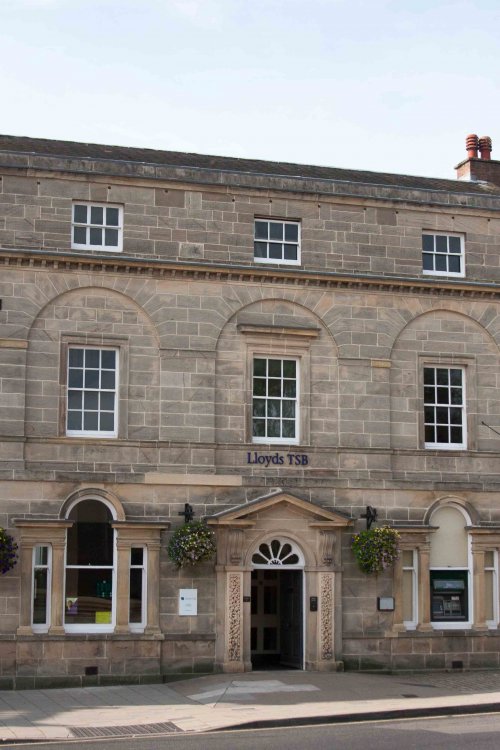Compton House was designed by the same architect who designed St Helen's House and the original Assembly Rooms in Derby - can you spot the similarities?
Francis Beresford (1737 - 1801) was a younger son of the main Beresford gentry family. He became an attorney and made his fortune from coal mining and the Butterley Company at Ripley in Derbyshire. In 1765 Francis acquired land in the Compton. He was twenty-eight years old and about to marry. There is no record of a previous building and it is surprising that the building butts onto the road rather than being set back. The facade is in stone but the sides and back are in brick. The gardens at this time stretched back to the current location of Station Rd and the Station Hotel.
The architect, Joseph Pickford, was an architect of significance in and around Derby. His most notable works in the city of Derby are St Helens House and the Assembly Rooms. He produced a number of other houses including 44 Friar St where the facade is very close to Compton House except it is in brick and Compton House is in Stone. Compton House has been described as ’one of the most impressive of Pickford’s smaller designs’. Pickford also did work for the Duke of Devonshire and Josiah Wedgwood.
One of the architectural features found at Compton House is Venetian windows which are either side of the main door. Hulland House in Church Street also has such a window and they can be seen in Pickford Houses in Derby and in Erasmus Darwin’s House by the Cathedral Close Lichfield (not a Pickford building).
Prior to building Compton House Joseph Pickford did work re-fronting The Grey House for Brian Hodgson and The Mansion for Dr John Taylor, both in Church Street, Ashbourne. The windows at The Grey House and The Mansion House have Diocletian windows positioned above the Venetian windows. This combination of Venetian and Diocletian windows can be seen on another house in Ashbourne; at Vision Express, St John Street.
There are a number of places close by to Compton House covered on this web site. When you have finished exploring Compton House, you may like to explore the following links.
Compton is not only the name of the street; it is the name of an area separate to Ashbourne which goes back over 1000 years.
The Henmore Brook use to be called Scolebrook and has been an administrative boundary since before 1066.
Waterloo House, next door to Neill’s the ironmongers, is a Georgian house renamed in honour of a relative who fought at the Battle of Waterloo.
Immediately over the bridge is The Bridge. The building now provides food and drink. It once was a work house.
As you walk into town on the left is a cheese shop, The Cheddar Gorge. One feature of this shop is its unusual brick bonding.
Joseph Pickford, respected architect of the 18th Century worked on several houses in Ashbourne.
Francis Beresford (1737- 1801), of Compton House, was a younger son of the main Beresford gentry family. He became an attorney and made his fortune from coal mining and the Butterley Company at Ripley in Derbyshire.
In the 1270's Ashbourne traders complied with The Assize of Bread and Ale, but had their prices undercut by Compton traders.








